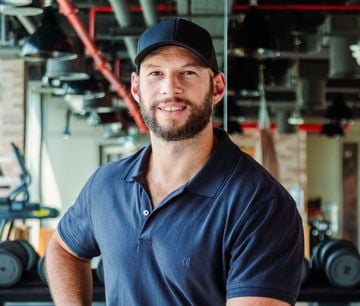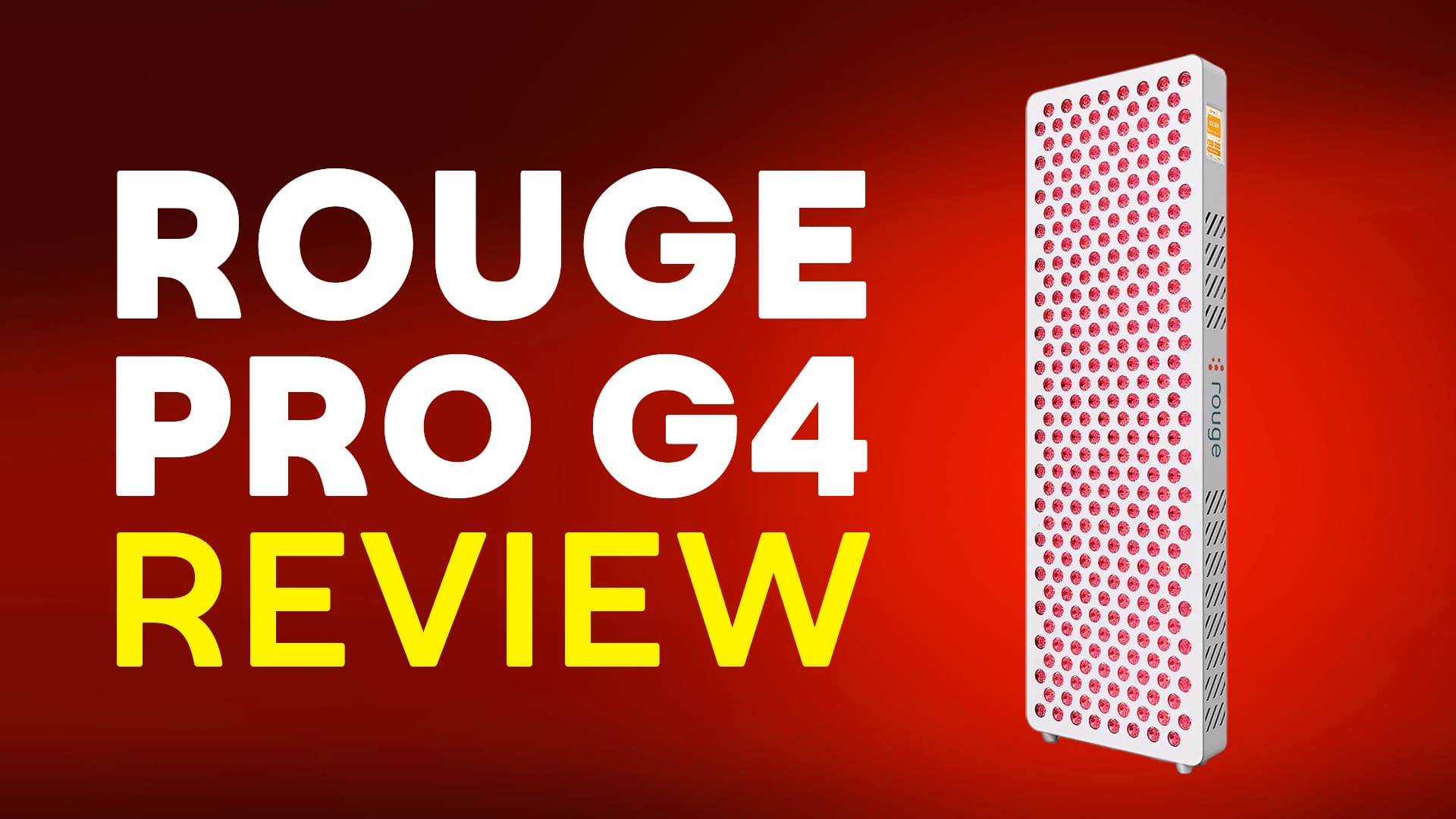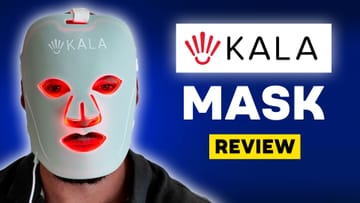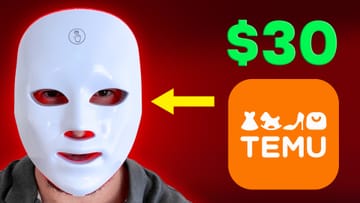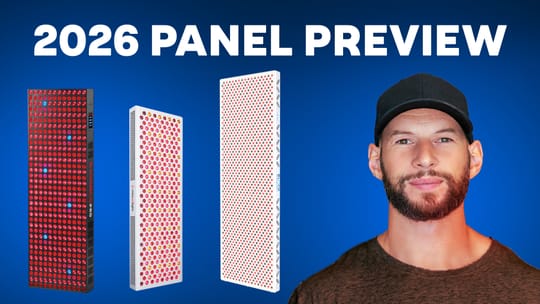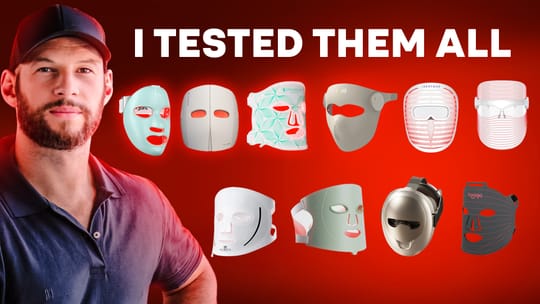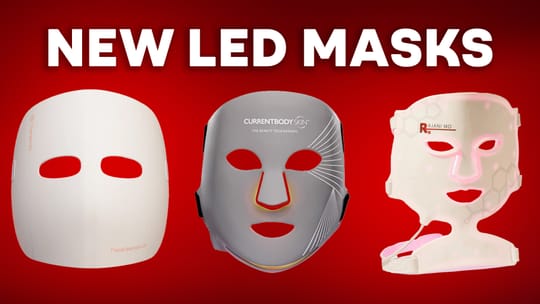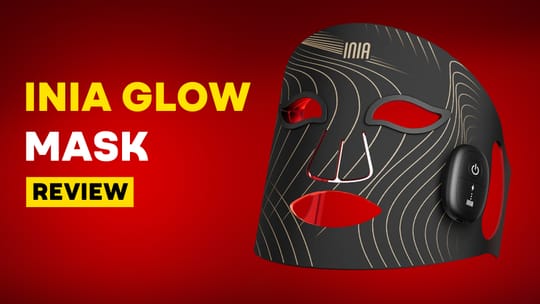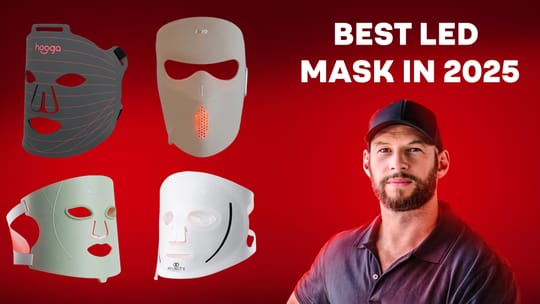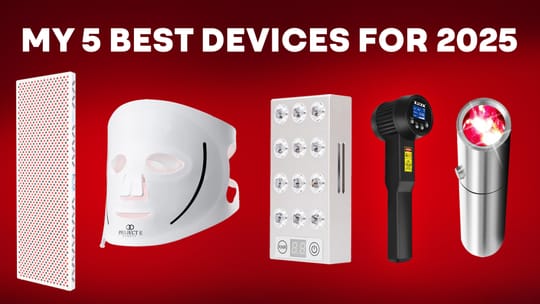I've had many people ask me about the Rouge G4 Pro lately. And I mean a lot. So many that I had to find out for myself what all the hype was about. Why were so many people suddenly interested in this panel? What made it stand out?
Now that I’ve had the chance to thoroughly test it, I can confidently say that it has some impressive features.
Quick disclaimer: I am affiliated with the companies mentioned in this article, which means I may earn a commission if you purchase through the links or codes provided. All products were sent to me free of charge, but the testing and opinions here are entirely my own, based on independent research and hands-on experience. This is not medical advice. Always consult a qualified healthcare provider.
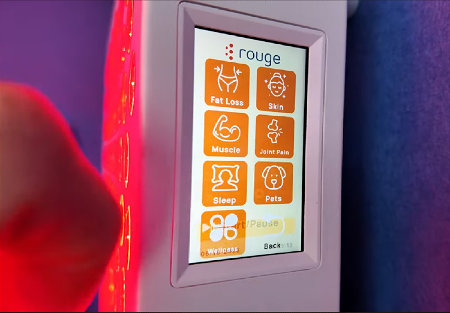
Rouge’s Track Record—and What’s Changed
Rouge has a history of making solid red light therapy panels. If you’ve followed any of my panel comparison videos over the years, you’ve seen them consistently perform well, sticking to a tried-and-true formula of 660nm and 850nm wavelengths.
But while other brands moved into four, five, and even seven-wavelength territory, Rouge remained firm: “660 and 850 are enough.”
Well, that changes now.
With the release of their Generation 4 panel, Rouge has fully embraced variety—eight wavelengths in one device. That’s not just a lot; it’s market-leading.
But they didn’t stop there.
There’s a new touchscreen control system—an app. Independent dimming controls for all eight wavelengths— you decide the power ratio. Built-in pulsing? Check. Even more impressive? You can pulse individual wavelengths (for example, pulse just the 630nm wavelength while keeping everything else steady). That level of control is something we haven’t seen before.
Add bonus features like alarm clock mode, and you’ve got a full-featured panel that looks extremely promising on paper.
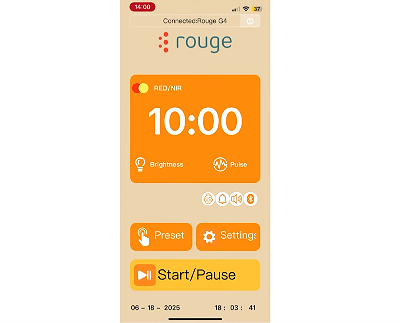
Panel Build and LED Layout
The G4 Pro houses 288 dual-chip LEDs in a body that classifies this as a wall panel:
- 36 inches tall
- 11.5 inches wide
- 2.5 inches thick
Its size and output format align with those of a full-body therapy panel. However, let’s delve into the performance aspect.
Wavelength Testing: A True 8-Wavelength Powerhouse
I hooked up the spectrometer to take a look under the hood, and the results were quite exciting.
Here’s what we found on the red side: 630nm, 650nm, 660nm, and 670nm
There’s some overlap between those wavelengths, but you’re still getting a broad spread of red light that I haven’t seen before on a single panel.
Then, for near-infrared wavelengths: 810nm, 830nm, 850nm, and 1060nm.

My current spectrometer doesn’t directly measure 1060 nm, but I can see light rising in that range, especially from 980 nm upward. This indicates there’s energy present in the 1060 band, just as Rouge claims.
It’s worth noting that each 4-LED cluster contains all eight wavelengths, which is a rare feature. As I tested different panel parts, the light spread remained consistent.
However, the balance between red and near-infrared wasn’t perfect. The near-infrared output dominated, which may appeal to some users but not all. Still, at 6 inches away, you’re getting good, even coverage.
Power Output Testing: Decent, But Not a Market Leader
Let’s get into numbers.
- Peak power reading: 65 mW/cm²
- Average (across 9 points): 59.2 mW/cm²
- Total wattage output: 134 watts
So, how does this compare?
Using the Light Therapy Insiders Shopping Tool, I sorted for wall panels by average irradiance. The leaders are now pushing into the 90s. The Rouge is 59 mW/cm², tied for 16th place.
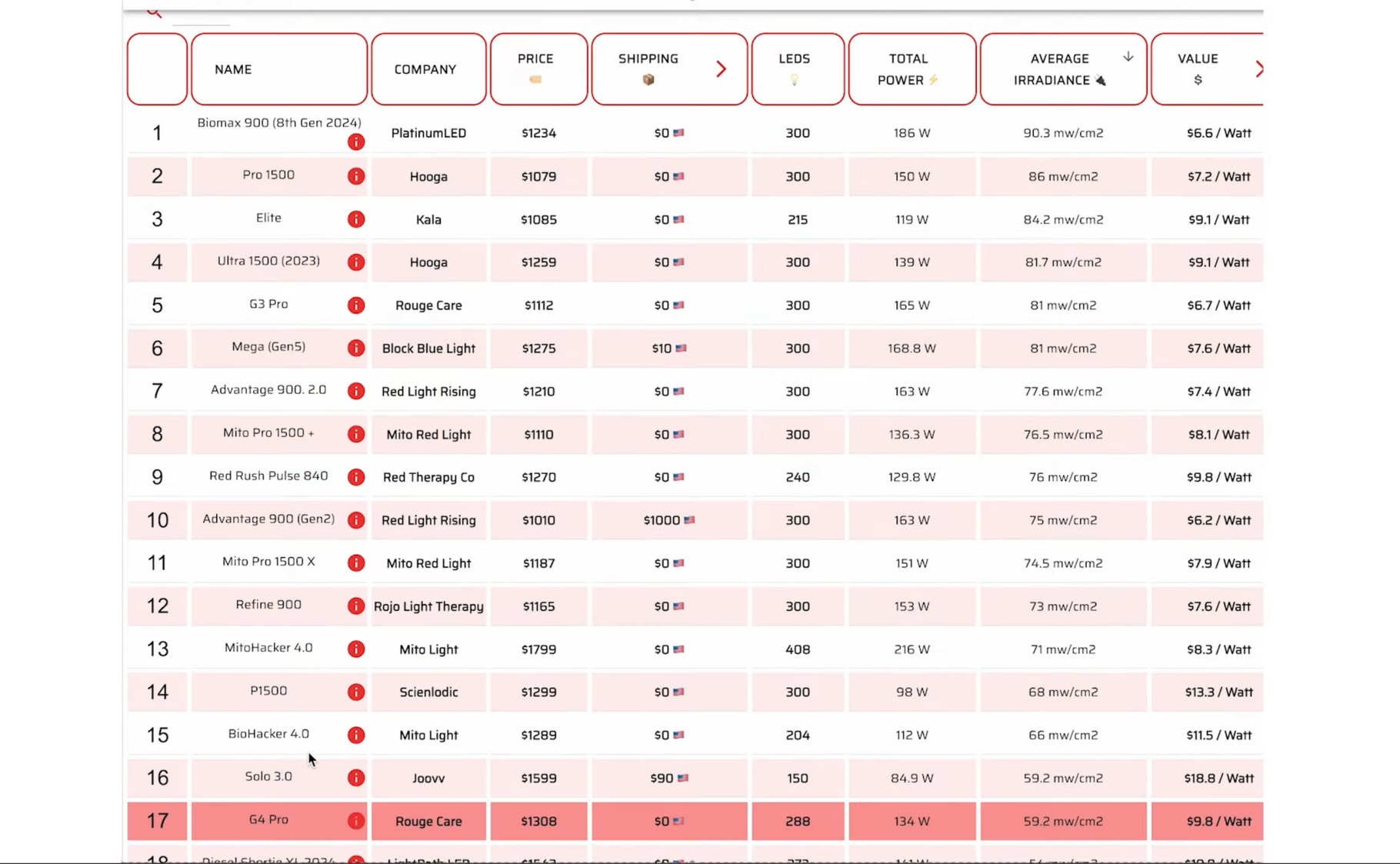
Regarding total power output (which takes into account size), the Rouge came in 13th place. So, no, it’s not a power monster. But performance is still solid, just not class-leading.
Other panels may be more suitable if you need high energy for deep joint injuries or large-muscle treatment. But Rouge’s output is more than enough for most users.
What This Means for Therapy
The variety in wavelengths stands out. The 630–670nm range is excellent for skin and surface tissue. The 810–1060 nm range reaches deeper, helping collagen production, muscle and tendon repair, and bone health.
If you're targeting the brain, joints, or deep muscle, that 1060nm inclusion is a significant win. You’re not just getting variety—you’re getting targeted performance.
Sound Levels & Build Quality
Noise levels are impressively low, 47.5 decibels; it is one of the quietest full-size panels I've tested.

Price, Shipping & Value Score
The G4 Pro retails for $1,350 USD, but with my discount code, ALEX, that drops to $1,138. That includes shipping and taxes to most major destinations worldwide.
At that price point, the value per watt of therapeutic light is $9.80. When sorted by value on the shopping tool, it lands in 13th place. The best-value panels cost around $6–7 per watt, so there are more affordable ways to achieve a similar level of energy.
But again, keep in mind:
- 1060 nm LEDs are expensive
- 1/8 of the panel is dedicated to 1060
- This panel is not just about price—it’s about flexibility and wavelength depth
What’s in the Box?
- Protective goggles
- Wall mounting bracket (included for free)
- Optional floor stand ($125)
- Optional horizontal or vertical stand ($500)
- 3-year warranty
- 60-day return window
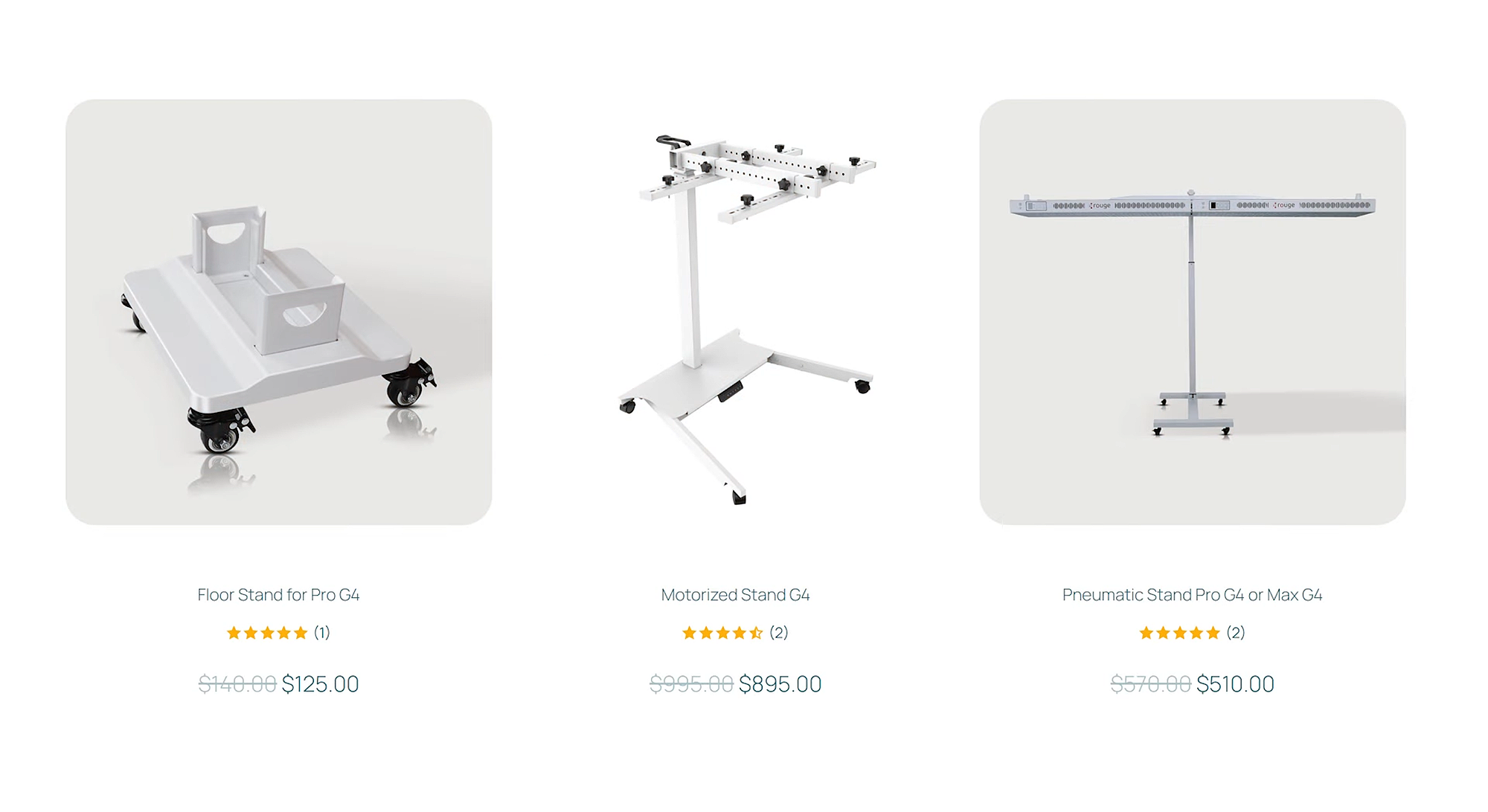
What I Like About the Rouge G4 Pro
This panel’s eight-wavelength spectrum is impressive, even if a few are close (e.g., 650 vs. 660 nm). That overlap doesn’t bother me—it just means a smoother, broader light curve.
I like the dual-chip LEDs and the even spread of wavelengths across the whole panel. There are no concentrated zones, just a nice, balanced output.
Another major plus is the inclusion of 1060nm. It’s not a gimmick—this wavelength is being explored in brain health devices and deeper-penetrating therapies.
The remote + app combo is a brilliant addition. While the panel's touchscreen is high-resolution, the app interface is easier to use, especially given the many customization options.

One significant standout feature is that you can independently adjust the intensity of each wavelength and set individual pulsing frequencies. This allows advanced users to get creative. Built-in preset modes, such as sleep, muscle recovery, or pet therapy, offer easy use for anyone who prefers plug-and-play simplicity.
And finally, it’s just really quiet.
What I Didn’t Love
There is no printed manual—just a leaflet telling you to download it online. This felt like a miss for a premium-priced panel, especially for people new to red light therapy.
The touchscreen works fine, but with so many features, I think a larger screen would’ve been better. Interface-wise, there's room for improvement.
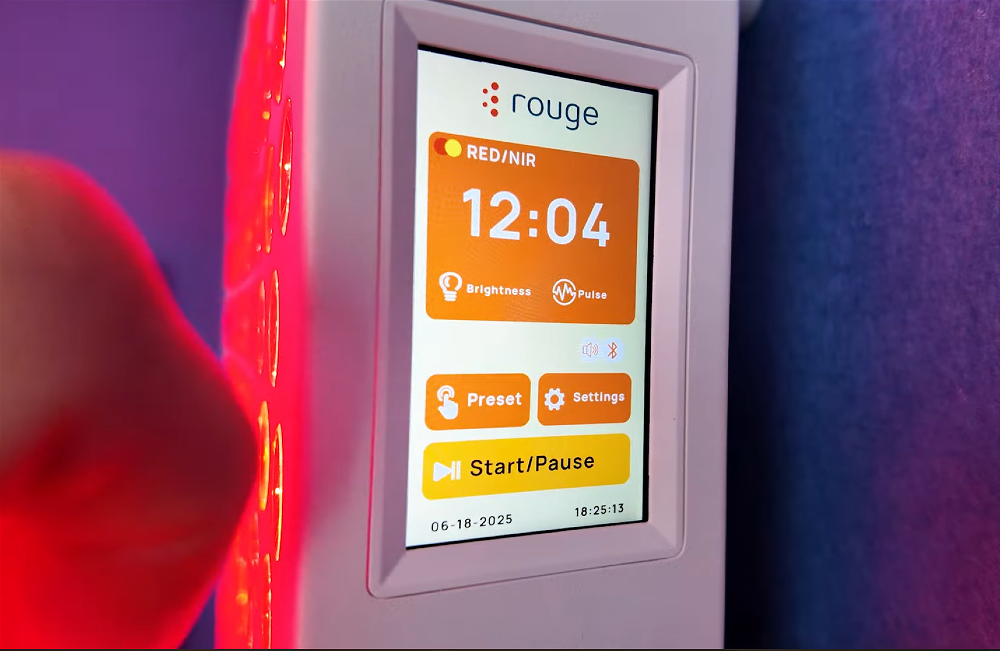
Another small complaint: I noticed a slight humming noise when dimming specific wavelengths. It's nothing extreme, but it's worth noting.
A bigger concern is that about two-thirds of the energy output is in the near-infrared range. That’s great for deep tissue, but may be less ideal if you specifically target skin or superficial issues.
It cannot save custom presets. With all the control options built in, it seems like a missed opportunity not to let users store their favorite settings.
Lastly, the price and power output. It’s more expensive than some competitors and not as powerful. That said, the feature set here still makes it an attractive option.
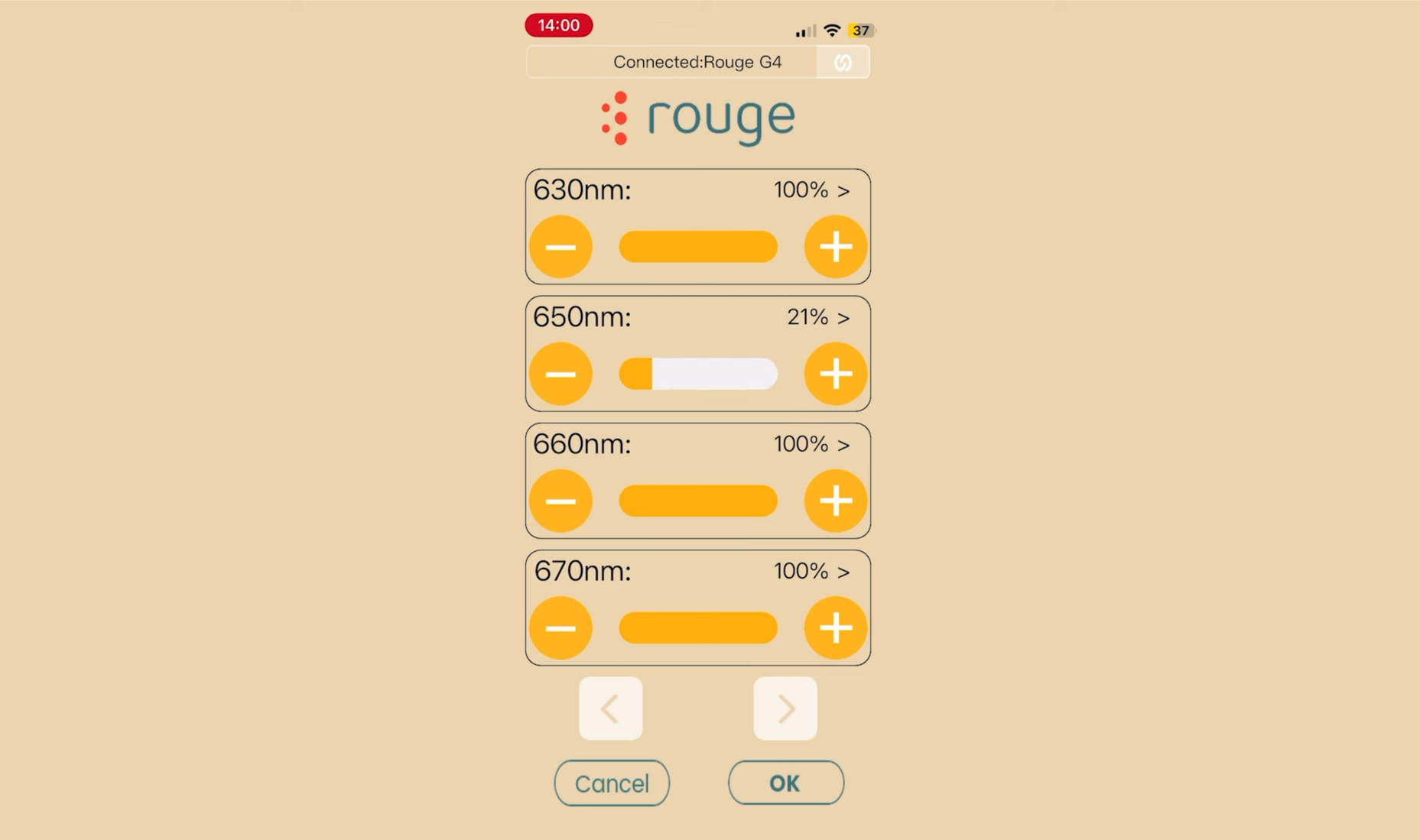
Should You Buy It?
If you’re looking for a red light panel with:
- Advanced features
- Lots of near-infrared
- True 1060 nm output
- High customization and app control
Then yes, the Rouge G4 Pro is a very solid choice.
It’s also a good fit whether you’re a beginner seeking a reliable and effective panel or an advanced biohacker looking to experiment with light ratios and pulsing settings.
Compared to the Competition
Let’s look at how it stacks up against a few big names:
Block Blue Light Mega 5.0
The Block Blue Light Mega is more powerful, slightly cheaper, and features five wavelengths—but lacks the 1060 nm wavelength.
PlatinumLED BioMax 900
One of my personal favorites, the BioMax 900, features seven wavelengths (including blue light), is more powerful, and is more affordable. However, it uses single-chip LEDs and can’t adjust each wavelength independently.
Hooga Ultra 1500
The Hooga Ultra has more power, LEDs, and a lower price, but emits only four wavelengths. However, it uses quad-chip LEDs, meaning every LED emits all four wavelengths, giving near-perfect light distribution.
Ultimately, there are numerous good choices. The Rouge G4 Pro may not excel in raw power or price, but it offers something unique: full-spectrum control and a 1060 nm output in a clean, versatile design.
Items Mentioned in this Article:
⭐ If you want a Rouge Care Pro G4 panel or other product, use discount code ALEX at https://aferg.co/rougecare
⭐ Buy a PlatinumLED BioMax panel or accessories, and use the following link for a discount: https://aferg.co/redled
⭐ For a Hooga Ultra, click the link: https://aferg.co/hooga-rlt - The discount will be automatically applied at checkout.
⭐ For a Block Blue Light Powerpanel Mega: click the link https://aferg.co/BlockBlueLight - The discount is automatically applied at checkout.
You May Like These Videos:
⭐ PlatinumLED Vs Block Blue Light Vs Rojo: BIG Showdown!
⭐ Hooga Ultra 360 Review: Effective & Affordable BUT...
⭐ Can I Stop Using Red Light After This Sunset Test?!
⭐ Do You Get Vitamin D From Red Light Therapy? Know THIS!
⭐ Can ChatGPT Beat 7 Years of Red Light Experience?
Found This Interesting? Then You Might Like:
⭐ Red Light Therapy For Stroke Recovery: Hopeful, But More Research Is Needed...
⭐ Everything You Need To Know About Tinnitus & Red Light Therapy
⭐ Combating Psoriasis With Red Light Therapy: Potential Game-Changer?
⭐ Using A $20 Grow Light For Red Light Therapy - Fact Or Fiction?
⭐ Red Light Therapy For Hair Growth: Worth The Hype!
Alex's Bio
This blog post was written by Alex Fergus. Alex is a ISSN Sports Nutrition Specialist, Fitness Professional and certified Superhuman Coach who continues to expand his knowledge base and help people across the world with their health and wellness. Alex is recognized as the National Record Holder in Powerlifting and Indoor Rowing and has earned the title of the Australian National Natural Bodybuilding Champion. Having worked as a health coach and personal trainer for over a decade, Alex now researches all things health and wellness and shares his findings on this blog.
